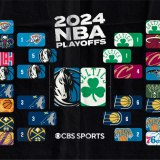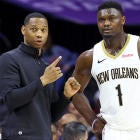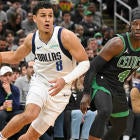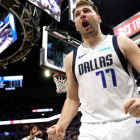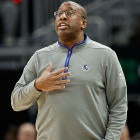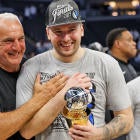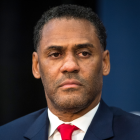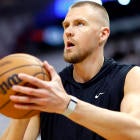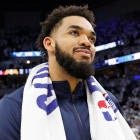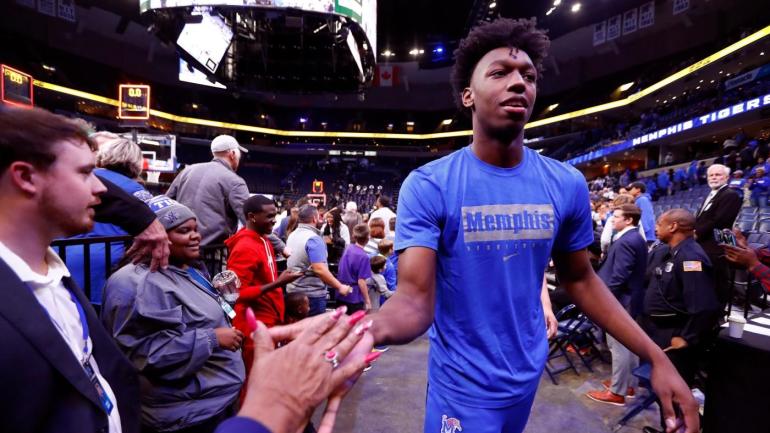
As NBA teams evaluate a draft class, they devour hours of tape, conduct background checks, gather measurements, and evaluate through different angles how each prospect managed to fit at their previous destinations. Were they the leading scorer on a bad team? Were they a role player on a great team? How efficient (or inefficient) were they in their respective roles? What is their mental makeup and what drives them?
In setting out to answer some of those questions, the objective is to project how each player will fit -- and where -- at the next level. It's an exercise in determining exactly what each player can bring to the table in the short- and long-term, but also one in measuring the ceiling and floor -- or the best potential outcome and worst potential outcome -- of every player.
So that's what we'll do today: a ceiling and floor exercise for some of this year's draft prospects. No evaluation is made in a vacuum, because circumstances can dictate success. But from a 50,000-foot view, we've got no choice but to evaluate in a vacuum how these five players' pro prospects look, and their best -- and worst -- potential NBA outcomes. (These players are evaluated in order, 1-5, based on the latest CBS Sports Top 100 Big Board.)
Want more analysis of the top prospects in the NBA Draft? Listen below and subscribe to the Eye on College Basketball podcast where we take a deep dive on the top players heading to the next level.
1. LaMelo Ball
Ceiling: NBA All-Star lead guard -- An elite passer with great positional size (6-foot-7) and an immense feel/IQ for the game, LaMelo Ball needs two specific developments to reach All-Star potential. The first is that he needs to build out his jumbo frame; he's hovering right around 180 pounds and was susceptible to easily being pushed off his spots last season in the NBL because of his lack of strength. The second, and more obvious weak spot in his game, is that his shot needs to improve -- both functionally and statistically. He shot just 25% from 3-point range overseas and has an inconsistent mechanical release, with a flared-out elbow upon release that only further suggests a tweak is in order. (His questionable shot selection only exacerbated any shooting struggles he endured last season.)
Floor: Rotation player/key reserve -- Having just turned 19 years old, there's obvious optimism among many talent evaluators that some of his bad habits -- like his poor shot selection, consistent defensive lapses and propensity to try to thread the needle on passes too much -- can be reined in. NBA teams always believe habits are correctable and fixable if there's a good, solid foundation on which to build. And Ball's passing, handles, height and instincts suggest that is indeed the case. But … what if those aren't correctable issues for him? He's always had full freedom on every team he's been on, from high school to the pros. It's possible those habits are deeply-rooted and difficult to correct. If that's the case, we're instead talking about a low-end starter or key reserve player who can make an impact on offense as a creator but can't provide enough value to be a true star in the league.
2. Killian Hayes
Ceiling: NBA All-Star lead guard -- A left-handed lead guard who has long been on the international radar, Killian Hayes is an ultra-skilled prospect with good size (6-5), skill and craftiness needed to excel in the NBA. He makes high-level reads quickly and overseas has found a way to stand out among the crowd as a facilitator, creator and scorer in pick-and-roll situations. The way he can deliver dimes on time and carve out space has allowed him to overcome some of his athletic limitations overseas, and the best-case scenario for him in the NBA is that a step up in competition doesn't drastically affect his ability to continue doing so.
Floor: League-average starting guard -- On the flip side of that ceiling argument … it's not entirely implausible to think Hayes, for as crafty and smooth and skilled as he is, just gets overwhelmed against NBA-level athletes or at the very least has his biggest strengths mitigated. He's a below-the-rim athlete who has been able to compensate for that deficiency over time with feel and skill and vision, but the lack of burst and explosiveness could be a real problem for him against other defenders. If it is, he'll need to improve as an outside scorer or excel at creating space despite that hindrance, else he may simply be just-OK in the league but never a difference-maker who can transform some franchise as a lead guard.
3. Tyrese Haliburton
Ceiling: High-level starter, primary creator -- Great size, great skill, tremendous IQ on both ends of the floor. That's what one lucky team is getting in Iowa State's Tyrese Haliburton, who is rising in favor among front offices as one of the five-or-so best -- and certainly most safe -- prospects in this class. He has great size, a 7-foot wingspan and profiles as a selfless pass-first guard who can make smart reads and affect play on both ends of the floor. Scouts aren't sold on him as a primary creator because of his lack of explosiveness, but his vision, efficiency and passing, in a best-case scenario, might just render that concern moot. He rated 26th nationally in assist rate last season and ranked top-40 in each of his two collegiate seasons in true shooting percentage, while making 42.6% of his 237 total 3-point attempts.
Floor: Starter, secondary creator -- This is where I see his role in the NBA, and it's where I foresee him thriving. Same body type as Lonzo Ball, similar role as a long, effective defender who can run the floor, make sharp passes and operate as a secondary initiator (while also perhaps struggling in the halfcourt as a lead guard). Seeing him land in a place where a lead guard is already in place, like where I recently projected in my mock draft to Atlanta, is a place where his skills will be maximized and he'll be freed up to do what he does best.
4. James Wiseman
Ceiling: Franchise-caliber center, dominant defender -- Having played only three games at Memphis before bailing, it's hard to take the small sample size of his time in college at face value. But, it's all we have. And in that sample, he was one of the most dominant and disruptive centers in the game, with his 13.6% block rate ranking top-10 nationally among players at his position and his 3.0 blocks per game ranking third behind only Romaro Gill and Hayden Koval. Small sample aside, we know he's going to be a disruptive shot-blocker who affects shots with his length and his 7-foot-6 wingspan. Reaching franchise-caliber good requires, however, that he not only dominates defensively but also develops as a shooter and as a passer. In a perfect world where everything goes his way, he becomes this generation's David Robinson.
Floor: Solid starter, shot-blocker and rebounder; one-dimensional offensive weapon -- It's pretty likely based upon everything we know about Wiseman dating back to AAU ball that he'll be a rim-runner who can finish at the hoop, rebound well and block shots at a high rate. That should give him a nice, safe NBA floor. But it's also pretty likely that a lot of other areas of his game that need to break right for him to reach his full potential, like his sub-par passing, average shooting touch and fairly one-dimensional offensive game, just might never completely come to fruition. In that case he's still a starting-caliber big, but in the modern NBA, it's difficult to fully buy his star potential with reasonable concerns about his shot and motor.
5. Anthony Edwards
Ceiling: NBA All-Star, No. 1 scoring option -- It's almost universally agreed-upon that Anthony Edwards will be a big-time NBA scorer. It's almost universally accepted, however, that he'll be more of a Zach LaVine-type scorer instead of a James Harden-type scorer -- an inefficient player with a relatively low overall impact on the game. Yet there's a world where Edwards, who just turned 19, kicks some bad habits and just becomes the clear-cut best guy in this class. That world would center around him improving his efficiency as a scorer and locking in consistently on both ends of the floor, which doesn't seem likely given what we've seen from him so far. But that's a much more likely expectation at the NBA level than it was at Georgia, where he played for a bad team and was asked to be the team's everything. Teams are going to be itching to bet on his talent and athleticism and hope they can try for the opportunity to mold him into reaching this outcome. His shot-creation ability, ideal frame and two-way upside is very real if things fall into place for him.
Floor: High-volume scorer, inefficient two-way player -- The possibility exists that Edwards, despite his youth and despite his obvious talents and despite his jaw-dropping athleticism, is just exactly who we think he is: an inefficient scorer who comes and goes on defense. This is a nightmare scenario for a likely top-3 pick, and why despite his upside he comes in at No. 5 in the latest CBS Sports Big Board update. He needs to find the right system and figure out a lot of stuff at the next level to succeed, but even then the delta between his potential ceiling and potential floor is large enough that it's hard to feel confident about drafting him.











